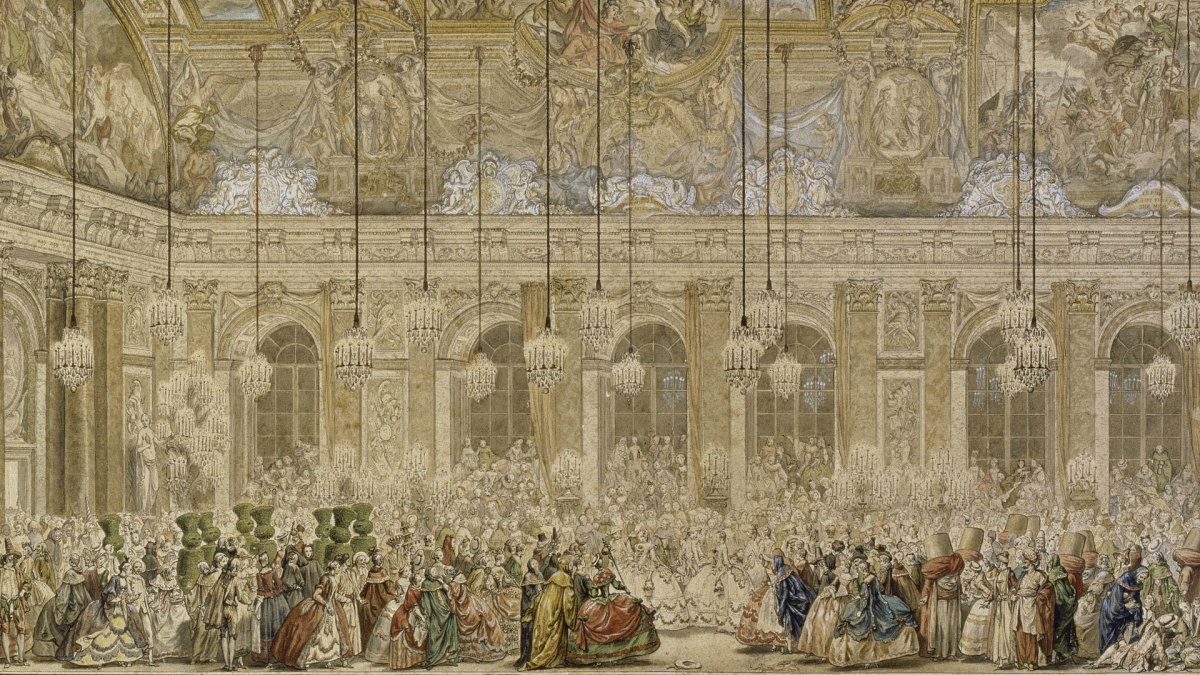The most restrained baroque painter was probably Diego Velasquez (1599-1660), who spent thirty-four years at the court of Philip IV of Spain. Velasquez needed all his skill to soften the receding chins and large mouths of the Habsburgs and still make his portraits of Philip IV and the royal family instantly recognizable. His greatest feat of technical wizardry is The Maids of Honor.
A little princess, having her portrait painted, is surrounded by a pet dog, dwarfs, and other attendants; it is the moment when the royal parents are looking in on the scene, but only their reflections are seen in a mirror at the rear of the room. As Velasquez turns to greet them and looks at the viewer, the latter realizes he is standing where the royal couple must have stood. With its adroit use of mirrors, The Maids of Honor is a splendid example of baroque attempts to make the spectator an active participant.
Unlike the aristocratic Velasquez, the Flemish Peter Paul Rubens (1577-1640) was the baroque counterpart of the Renaissance universal man. A diplomat, a linguist, and a student of antiquity and archaeology, he amassed a fortune from his painting and collected such impressive honors as being knighted by Charles I of England and elevated to the nobility by the king of Spain.
Rubens made his studio, with its two hundred students, a factory of art. He himself is estimated to have contributed to over two thousand pictures, whose subjects ranged from simple portraits to ambitious political themes. He was commissioned by Marie de’ Medici, widow of Henry IV of France, to execute a series of canvases glorifying Henry and herself. As monarchs by divine right, Henry and Marie were portrayed more as mythological figures than as mere mortals.
One of Ruben’s pupils was a fellow Fleming, Anthony Van Dyck (1599-1641), whose portraits of Charles I captured the casual elegance and confident authority of the Stuart monarch. Although courtly style was not highly valued by the Flemings’ northern neighbors in the Netherlands, the officers of Dutch civic guards, the governing boards of guilds, and other important organizations of Dutch merchants liked to be portrayed for posterity. Dutch middle-class families favored small, cheerful pictures, preferably showing the leisure activities cherished by these hard-working people. The consequence was a veritable explosion of artistic output that coincided with the heyday of Dutch prosperity during the first two-thirds of the century. With the French invasion of the 1670s, both the economic and artistic hegemony of the Dutch began to fade.
Seventeenth-century Dutch painters were admired both for their subtle depiction of light and color in landscapes and for their realistic representations of the interiors of Dutch houses, with their highly polished or well-scrubbed floors and their strong contrasts of light and shade. The best-known baroque painters in the Netherlands were Frans Hals (c. 1580-1666) and Rembrandt Van Rijn (1606-1669). Hals used bold strokes to paint cheerful contingents of civic guards, laughing musicians, and tavern drunks. As he aged, he himself became a chronic drinker; vet in his eighties, a penniless inmate in a poorhouse, he painted the most remarkable group portrait in baroque art—The Women Regents of the Haarlem Hospital, dour, formidable, and aging matrons in all their Calvinist severity.
Rembrandt, too, attained fame early, then slipped into obscurity and poverty; he documented his troubles in a series of moving self-portraits. He also executed famous group portraits—The Night Watch and The Syndics of the Drapers’ Guild. Rembrandt painted an exceptional scientific subject, The Anatomy Lesson of Dr. Tulp, in which a physician is explaining the structure of blood vessels and tendons in the arm of an executed criminal, the only kind of cadaver available to anatomists.

